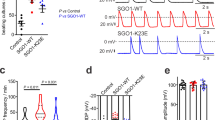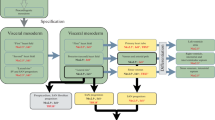Abstract
Coordinated ureteric peristalsis propels urine from the kidney to the bladder. Cells in the renal pelvis and ureter spontaneously generate and propagate electrical activity to control this process. Recently, c-kit tyrosine kinase and hyperpolarization-activated cyclic nucleotide-gated channel 3 (HCN3) were identified in the upper urinary tract. Both of these proteins are required for coordinated proximal to distal contractions in the ureter. Alterations in pacemaker cell expression are present in multiple congenital kidney diseases, suggesting a functional contribution by these cells to pathologic states. In contrast to gut and heart pacemaker cells, the developmental biology of ureteric pacemaker cells, including cell lineage and signaling mechanisms, is undefined. Here, we review pacemaker cell identify and function in the urinary pelvis and ureter and the control of pacemaker function by Hedgehog-GLI signaling. Next, we highlight current knowledge of gut and heart pacemaker cells that is likely to provide insight into developmental mechanisms that could control urinary pacemaker cells.

Similar content being viewed by others
References
David SG, Cebrian C, Vaughan ED Jr, Herzlinger D (2005) C-Kit and ureteral peristalsis. J Urol 173(1):292–295
Hurtado R, Bub G, Herzlinger D (2009) The pelvis-kidney junction contains HCN3, a hyperpolarization-activated cation channel that triggers ureter peristalsis. Kidney Int 77(6):500–508
Bozler E (1942) The activity of the pacemaker previous to the discharge of a muscular impulse. Am J Physiol 136:543–552
Gosling JA, Dixon JS (1971) Morphologic evidence that the renal calyx and pelvis control ureteric activity in the rabbit. Am J Anat 130:393–408
Björk L, Nylén O (1972) Cineradiographic investigations of contraction in the normal upper urinary tract in man. Acta Radiol Diagn 12(1):25–33
Gosling JA (1970) Atypical muscle cells in the wall of the renal calix and pelvis with a note on their possible significance. Experientia 26(7):769–770
Gosling JA, Dixon JS (1974) Species variation in the location of upper urinary tract pacemaker cells. Invest Urol 11(5):418–423
Klemm MF, Exintaris B, Lang RJ (1999) Identification of the cells underlying pacemaker activity in the guinea-pig upper urinary tract. J Physiol 519(Pt 3):867–884
Metzger R, Schuster T, Till H, Stehr M, Franke F-E, Dietz H-G (2004) Cajal-like cells in the human upper urinary tract. J Urol 172(2):769–772
Metzger R, Schuster T, Till H, Franke F-E, Dietz H-G (2005) Cajal-like cells in the upper urinary tract: comparative study in various species. Pediatr Surg Intl 21(3):169–174
Pezzone MA, Watkins SC, Alber SM, King WE, de Groat WC, Chancellor MB, Fraser MO (2003) Identification of c-kit-positive cells in the mouse ureter: the interstitial cells of Cajal of the urinary tract. Am J Renal Physiol 284(5):F925–F929
Lang RJ, Zoltkowski BZ, Hammer JM, Meeker WF, Wendt I (2007) Electrical characterization of interstitial cells of Cajal-like cells and smooth muscle cells isolated from the mouse ureteropelvic junction. J Urol 177(4):1573–1580
Tekgül S, Riedmiller H, Hoebeke P, Kočvara R, Nijman RJM, Radmayr C, Stein R, Dogan HS (2012) EAU guidelines on vesicoureteral reflux in children. Eur Urol 62(3):534–542
Schwentner C, Oswald J, Lunacek A, Fritsch H, Deibl M, Bartsch G, Radmayr C (2005) Loss of interstitial cells of Cajal and Gap junction protein connexin 43 at the vesicoureteral junction in children with vesicoureteral reflux. J Urol 174(5):1981–1986
Oberritter Z, Rolle U, Juhasz Z, Cserni T, Puri P (2009) Altered expression of c-kit-positive cells in the ureterovesical junction after surgically created vesicoureteral reflux. Pediatr Surg Int 25(12):1103–1107
Solari V, Piotrowska AP, Puri P (2003) Altered expression of interstitial cells of Cajal in congenital ureteropelvic junction obstruction. J Urol 170(6):2420–2422
Cain JE, Islam E, Haxho F, Blake J, Rosenblum ND (2011) GLI3 repressor controls functional development of the mouse ureter. J Clin Invest 121(3):1199–1206
Christoffels VM, Smits GJ, Kispert A, Moorman AFM (2010) Development of the pacemaker tissues of the heart. Circ Res 106(2):240–254
Mangoni ME, Nargeot J (2007) Genesis and regulation of the heart automaticity. Physiol Rev 88(3):919–982
Mikawa T, Hurtado R (2007) Development of the cardiac conduction system. Semin Cell Dev Biol 18(1):90–100
Hoogaars WHM, Tessari A, Moorman AFM, de Boer PAJ, Hagoort J, Soufan AT, Campione M, Cristoffels VM (2004) The transcriptional repressor Tbx3 delineates the developing central conduction system of the heart. Cardiovasc Res 62(3):489–499
Garcia-Frigola C, Shi Y, Evans SM (2003) Expression of the hyperpolarization-activated cyclic nucleotide-gated cation channel HCN4 during mouse heart development. Gene Expr Patterns 3(6):777–783
Buckingham M, Meilhac S, Zaffran S (2005) Building the mammalian heart from two sources of myocardial cells. Nat Rev Genet 6(11):826–835
Christoffels VM, Mommersteeg MT, Trowe MO, Prall OW, de Gier-de Vries C, Soufan AT, Bussen M, Schuster-Gossler K, Harvey RP, Moorman AF, Kispert A (2006) Formation of the venous pole of the heart from an Nkx2-5-negative precursor population requires Tbx18. Circ Res 98(12):1555–1563
Mommersteeg MTM, Dominguez JN, Wiese C, Norden J, de Gier-de Vries C, Burch JB, Kispert A, Brown NA, Moorman AF, Christoffels VM (2010) The sinus venosus progenitors separate and diversify from the first and second heart fields early in development. Cardiovasc Res 87(1):92–101
Hoogaars WMH, Engel A, Brons JF, Verkerk AO, de Lange FJ, Wong LY, Bakker ML, Clout DE, Wakker V, Barnett P, Ravesloot JH, Moorman AF, Verheijck EE, Christoffels VM (2007) Tbx3 controls the sinoatrial node gene program and imposes pacemaker function on the atria. Genes Dev 21(9):1098–1112
Mommersteeg MTM, Hoogaars WMH, Prall OWJ, de Gier-de Vries C, Wiese C, Clout DEW, Papaioannou VE, Brown NA, Harvey RP, Moorman AFM, Cristoffels VM (2007) Molecular pathway for the localized formation of the sinoatrial node. Circ Res 100(3):354–362
Blaschke RJ, Hahuij ND, Kuijper S, Just S, Wisse LJ, Deissler K, Maxelon T, Anastassiadis K, Spitzer J, Hardt SE, Scholer H, Feitma H, Rottbauer W, Blum M, Meijlink, Rappold G, Gittenberger-de Groot AC (2007) Targeted mutation reveals essential functions of the homeodomain transcription factor Shox2 in sinoatrial and pacemaking development. Circulation 115(14):1830–1838
Espinoza-Lewis RA, Yu L, He F, Liu H, Tang R, Shi J, Sun X, Martin JF, Wang D, Yang J, Chen Y (2009) Shox2 is essential for the differentiation of cardiac pacemaker cells by repressing Nkx2-5. Dev Biol 327(2):376–385
Wiese C, Grieskamp T, Airik R, Mommersteeg MTM, Gardiwal A, de Gier-de Vries C, Schuster-Gossler K, Moorman AF, Kispert A, Christoffels VM (2009) Formation of the sinus node head and differentiation of sinus node myocardium are independently regulated by Tbx18 and Tbx3. Circ Res 104(3):388–397
Cheng G, Litchenberg WH, Cole CJ, Mikawa T, Thompson RP, Gourdie RG (1999) Development of the cardiac conduction system involves recruitment within a multipotent cardiomyogenic lineage. Development 126(22):5041–5049
Aanhaanen WTJ, Brons JF, Domínguez JN, Rana MS, Norden J, Airik R, Wakker V, de Gier-de Vries C, Brown NA, Kispert A, Moorman AFM, Cristoffels VM (2009) The Tbx2+ primary myocardium of the atrioventricular canal forms the atrioventricular node and the base of the left ventricle. Circ Res 104(11):1267–1274
Streutker CJ, Huizinga JD, Driman DK, Riddell RH (2007) Interstitial cells of Cajal in health and disease. Part I: normal ICC structure and function with associated motility disorders. Histopathology 50(2):176–189
Torihashi S, Ward SM, Sanders KM (1997) Development of c-Kit-positive cells and the onset of electrical rhythmicity in murine small intestine. Gastroenterology 112(1):144–155
Lecoin L, Gabella G, Le Douarin N (1996) Origin of the c-kit-positive interstitial cells in the avian bowel. Development 122(3):725–733
Young HM, Ciampoli D, Southwell BR, Newgreen DF (1996) Origin of interstitial cells of Cajal in the mouse intestine. Dev Biol 180(1):97–107
Kluppel M, Huizinga JD, Malysz J, Bernstein A (1998) Developmental origin and Kit-dependent development of the interstitial cells of Cajal in the mammalian small intestine. Dev Dyn 211(1):60–71
Sohal GS, Ali MM, Farooqui FA (2002) A second source of precursor cells for the developing enteric nervous system and interstitial cells of Cajal. Int J Dev Neurosci 20:619–626
Jiang J, Hui C-C (2008) Hedgehog signaling in development and cancer. Dev Cell 15(6):801–812
Acknowledgments
This work was supported by grants from the Canadian Institutes of Health Research and Canada Research Chairs Program (to NDR).
Author information
Authors and Affiliations
Corresponding author
Rights and permissions
About this article
Cite this article
Feeney, M.M., Rosenblum, N.D. Urinary tract pacemaker cells: current knowledge and insights from nonrenal pacemaker cells provide a basis for future discovery. Pediatr Nephrol 29, 629–635 (2014). https://doi.org/10.1007/s00467-013-2631-4
Received:
Revised:
Accepted:
Published:
Issue Date:
DOI: https://doi.org/10.1007/s00467-013-2631-4




